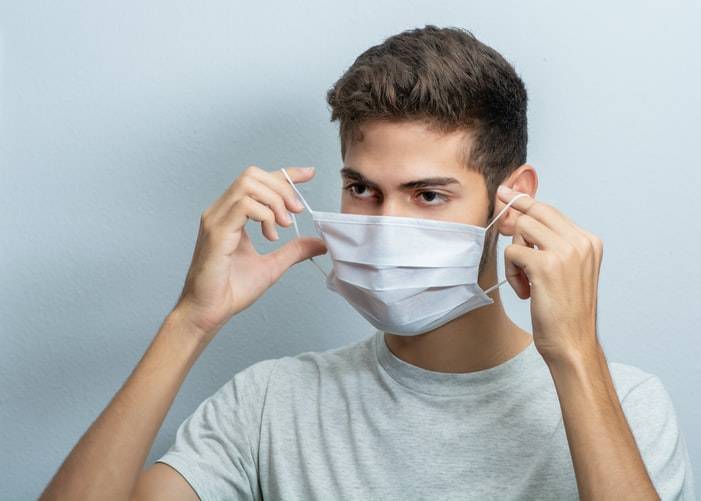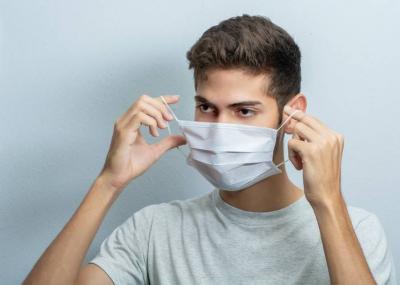With the resurgence of COVID-19 cases in the United States and elsewhere due to the Delta variant, fully vaccinated individuals are questioning whether they should continue to wear masks indoors. Vaccines remain effective in preventing hospitalization and death, and infections are rare among vaccinated people. However, according to some experts interviewed by AFP, there is no one-size-fits-all approach. People should consider factors such as infection transmission rates in their surroundings, personal risk levels, and their risk tolerance to determine what is best for them.
In May, the Centers for Disease Control and Prevention (CDC), the main federal public health agency in the United States, abandoned its mask guidelines for fully vaccinated individuals. By that time, the number of infections was rapidly declining, and the Biden administration was inclined to declare a return to normal life following an extensive vaccination campaign. However, on Thursday, the country reported over 50,000 COVID-19 cases, with the rise in cases primarily attributed to the Delta variant, particularly concentrated in areas with the lowest vaccination rates.
It is noteworthy that the increase in infections has not translated into a proportional rise in hospitalization and death rates. Approximately 200 deaths are currently being recorded daily, a figure significantly lower than the 3,500 daily deaths during the peak of the pandemic in winter. CDC Director Rochelle Walensky stated last week that over 97% of hospitalizations are among unvaccinated individuals, while U.S. Surgeon General Vivek Murthy indicated that 99.5% of deaths were also recorded among unvaccinated individuals. On Thursday, Rochelle Walensky defended the CDC's position on masking, insisting that the agency has always stated individuals should consider local conditions. She remarked, "If you are in an area with high transmission rates and low vaccination rates, where Delta variant cases are rising, you should definitely wear a mask if you have not been vaccinated." She added, "If you have been vaccinated, you will have exceptional protection because of it. But you are free to decide to add layers of additional protection."
Joseph Allen, an assistant professor at Harvard's public health school, supported Walensky’s stance, saying, "I don't think we are at a stage where the recommendation to wear masks is sensible for everyone, whether in the U.S. or in other countries with high vaccination rates." The changing guidance is frustrating. The World Health Organization continues to urge fully vaccinated individuals to keep wearing masks, particularly in light of the general situation where only 13.4% of the global population is fully vaccinated.
Allen stated, "For me, the goal of all vaccines has always been to avoid severe cases and deaths, and that's exactly what we are achieving quite well.” Concerning infections among vaccinated people, a recent study in a prison examined 27 positive cases among a group of 2,380 vaccinated individuals and found that 1.1% had contracted the virus, all of whom were asymptomatic and were discovered during routine testing. However, as the virus spreads in an environment, the likelihood of infections increases among vaccinated individuals as well.
Epidemiologist and infectious disease specialist Celine Gounder compared the situation before the Delta variant's emergence to driving in one’s neighborhood, while the current situation resembles driving on a racetrack. She told AFP, "When you drive in your neighborhood, a seatbelt is enough. But if you're on a racetrack, you'll need, in addition to a seatbelt, helmets and airbags." In her view, masks represent those additional layers of protection.
In some places in the U.S., like Los Angeles or Philadelphia, local authorities have reinstated indoor mask mandates. Infectious disease physician Monica Gandhi from the University of California, San Francisco, remarked that "the constant change in procedures is very frustrating for people." Therefore, she suggests using statistical markers to tie mask mandates to hospitalization rates. Like other experts, Monica Gandhi suggests that the threshold for resuming normal activities should be no more than five hospitalizations per 100,000 people.
Monica Gandhi, Joseph Allen, and others support using this threshold for schools when they reopen in the fall, while the American Academy of Pediatrics advocates for masking in general for everyone, including teachers and students who have been fully vaccinated.




